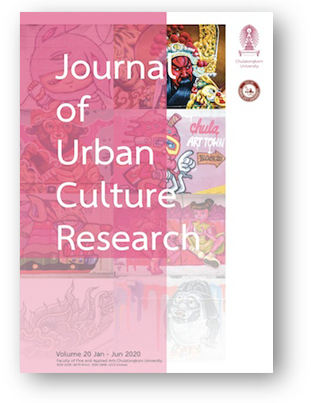Textile Installations Inspired by Cubism for Biodiversity Sustainability Education
DOI:
https://doi.org/10.14456/jucr.2020.4Keywords:
Biodiversity Conservation, Biodiversity Education, Cubism, Ghana, Textile Installation, Textile ArtAbstract
The study aimed at producing two textile installation projects inspired by the philosophical concepts and design characteristics of the cubism art movement to educate the Ghanaian populace on biodiversity conservation. This was in response to the call for multiple perspectives on the high biodiversity depletion in the country. The qualitative studio-based approach with Aesthetico-Action Research guided the production of the projects. Views from 26 study participants at the final exhibition of the projects were analyzed qualitatively to vouch for the suitability of the textile installation projects for biodiversity conservation education. The findings revealed that the textile installations instill intrinsic and aesthetic values that are ecocentric in viewers. These values motivate them to cultivate moral considerations for protecting biodiversity. The study concludes that the Ministry of Lands and Natural Resources in Ghana must liaise with textile installations artists in Ghana to produce biodiversity conservation projects to be used for educating the general public on the need to cherish and protect the biodiversity in Ghana.
Downloads
Published
How to Cite
Issue
Section
License
Authors authorize the JUCR to publish their materials both in print and online while retaining their full individual copyright. The copyright of JUCR volumes is retained by Chulalongkorn University.
The views and opinions expressed herein are those of the individual author(s) and do not necessarily reflect the policies or opinions of the Journal (JUCR), it editors and staff, Chulalongkorn University, or Osaka Metropolitan University.








